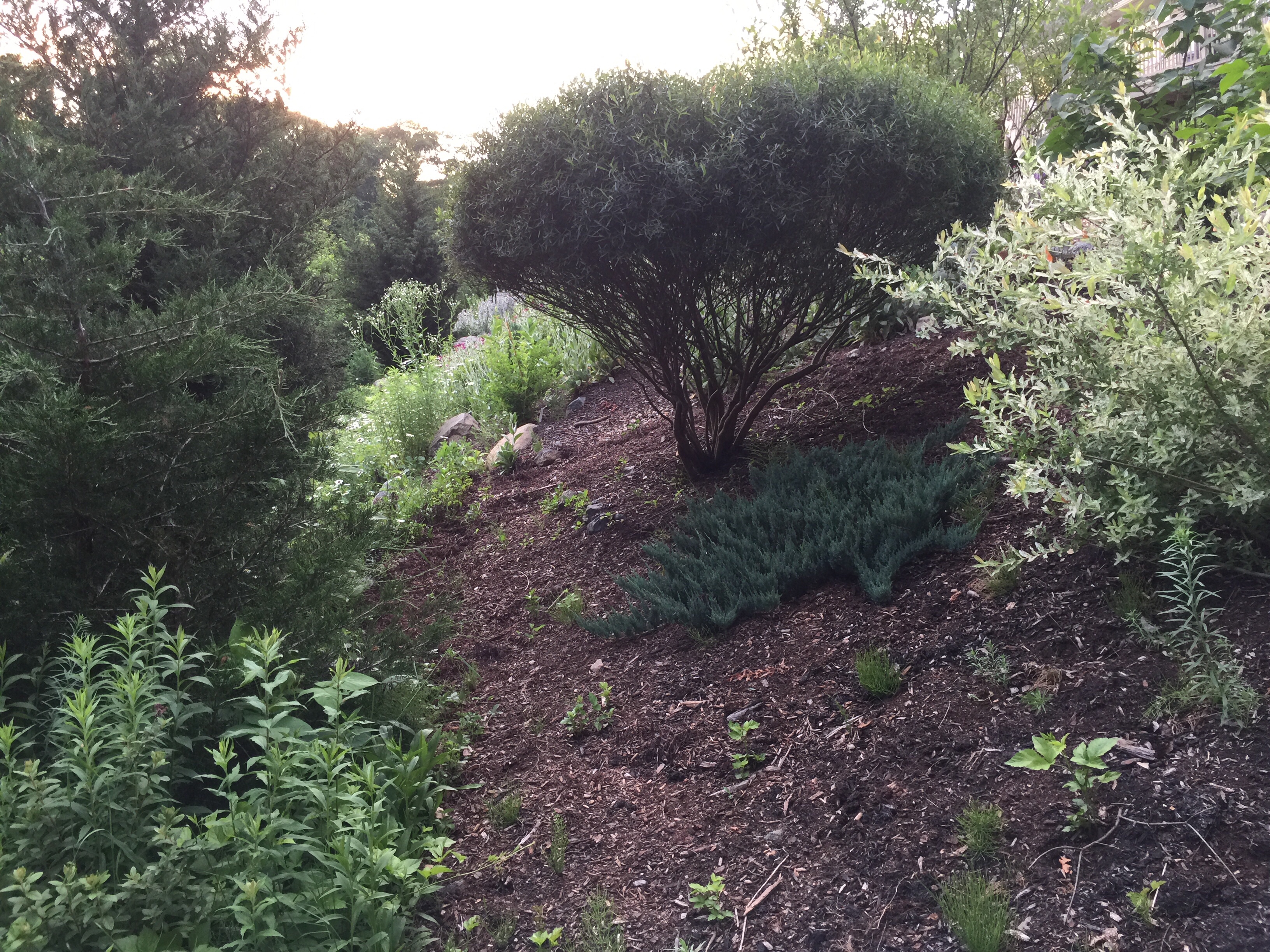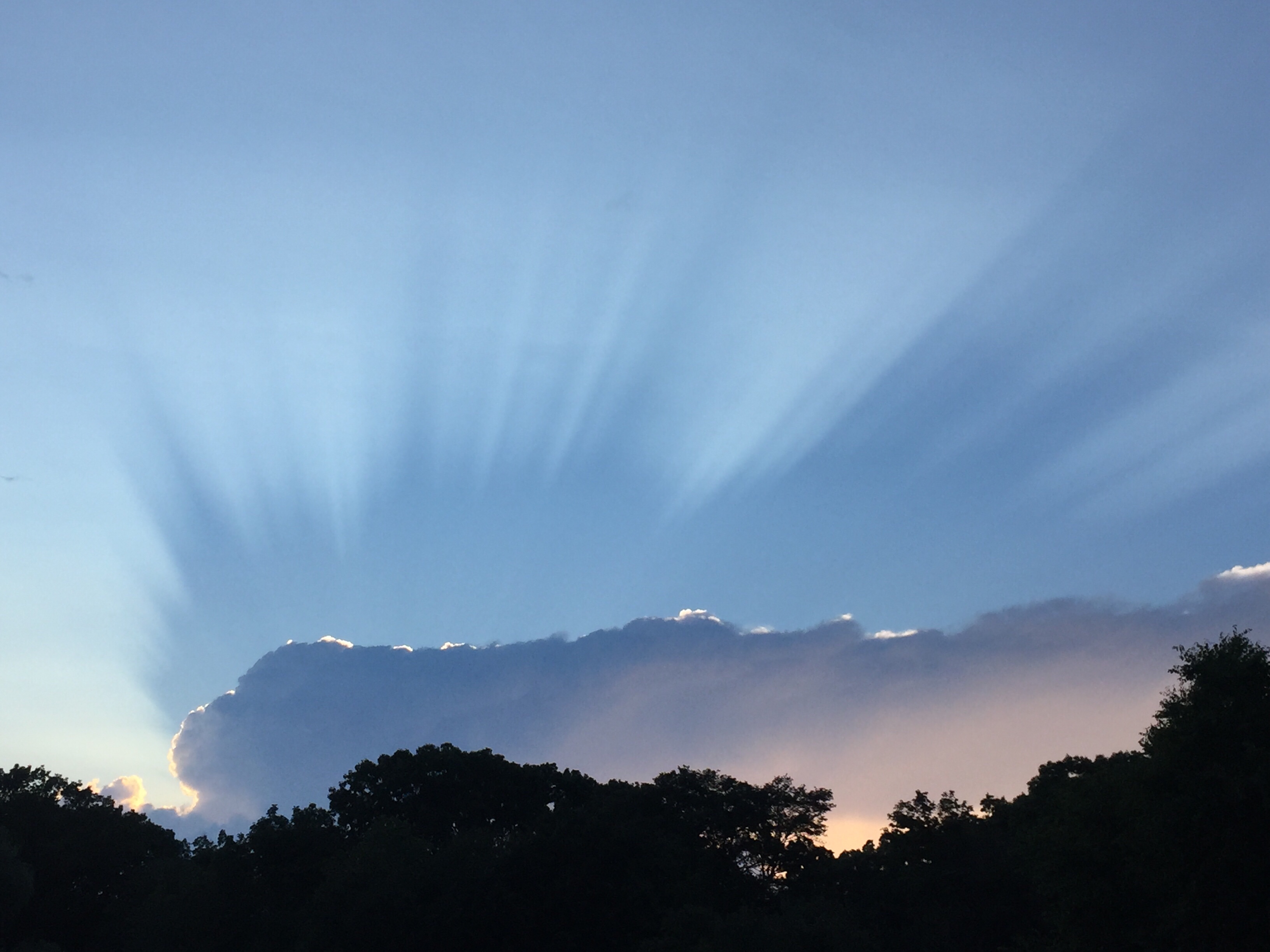
Author: Susan
Filling In for Wildlife
On the left, wildlife has more cover, now that more shrubs have grown up and it’s not just a mowed field. Now the other side awaits some type of solution for a wildlife corridor.
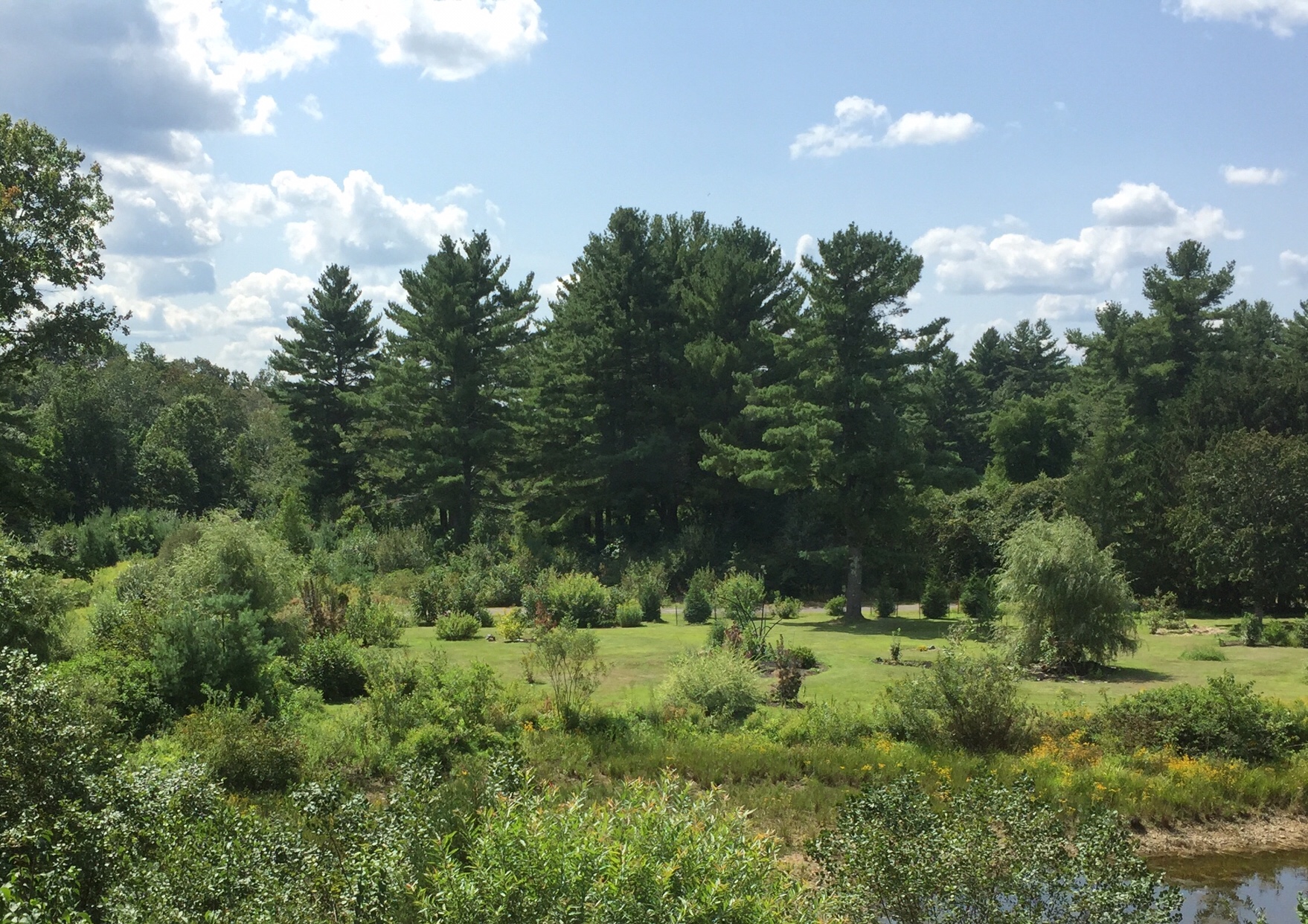
Robert the Rhody’s Progeny
A couple of lanky rhododendron subdivisions. I ended up leaving the topgrowth on, instead of pruning it off, so they’d have something to photosynthesize. We covered their disproportionately small root masses with compost and leaf mulch, then weighted them down with rocks.

The Former Knotweed Area
It’s just unbelievable that this area was once the thickest area of the densest, deepest and most monstrous Japanese knotweed rhizomes I’ve ever seen, over 8′ tall. You could not walk through it or see through it.
Now, it’s planted with a grove of Betula nigra (river birch) and one Ulmus americana (Princeton elm). The cedar, juniper and pines in the background are very happy also. Walker’s Low catmint loves the sunny slope. My favorite, though, is the Asclepias syriaca (common milkweed), in the foreground. Years ago, I scattered seed in this area, and it’s still coming up.
I don’t think of common milkweed as a weed at all. It’s beautiful, it has great architecture and its scent is heavenly. It does great things for insects (hence birds also) and butterflies. Last year when we had a resident groundhog family, the young shoots were their favorite food. Once we had milkweed coming up, the groundhogs left our salvias alone!

Inkberry – Ilex glabra
We planted several plants inkberries and this one’s the happiest. I love how the bluish tint of the lambs’ ears picks up on the water and the blue sky. The lambs’ ears are not native, however, they’ve been a huge help to fill in spots and prevent erosion on the dry, sandy slope where the junipers haven’t had a chance to fill in yet. To their right, upslope, is a patch of highbush blueberries.

Robert the Rhody
Taking this shot, my back to my neighbors’ house, I can see where someone once planted two rhododendrons many moons ago. The original plant’s lanky stems reached out and over, re-rooting in the ground beyond. Then that plant’s stems reached out and re-rooted. We counted 7 generations at the very least!
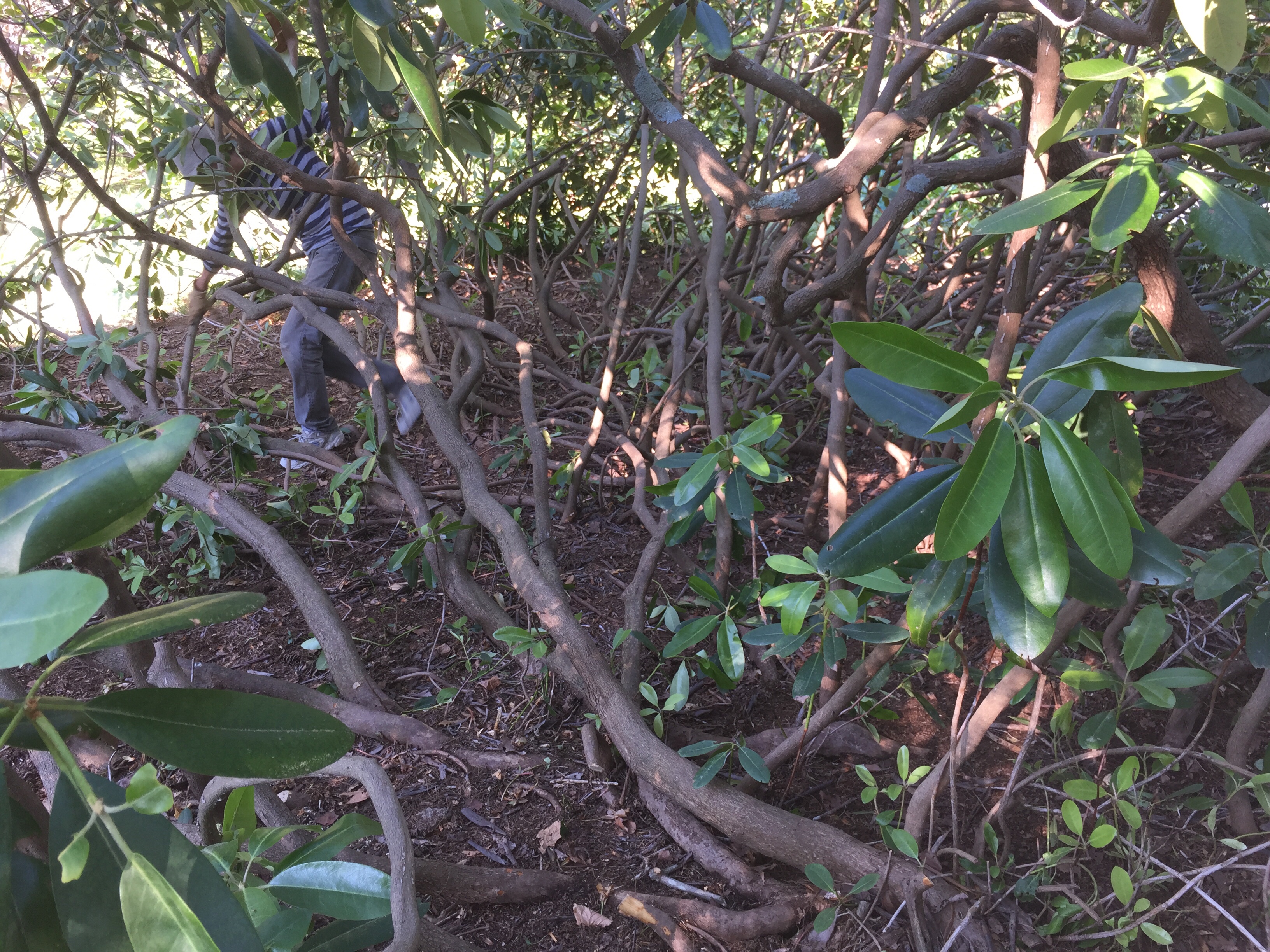
We used the Kioti tractor to pull apart the dozens of subdivisions. Many were planted in the shade around the perimeter of their property. I took about a dozen or so subdivisions, for the shady areas around our pond and back acre. We also gave away dozens. Robert the Rhody had many grandchildren that grew up to be successful!
June is Bustin’ Out All Over
Yes, this is the title of an old Broadway show tune, and it’s certainly true here!
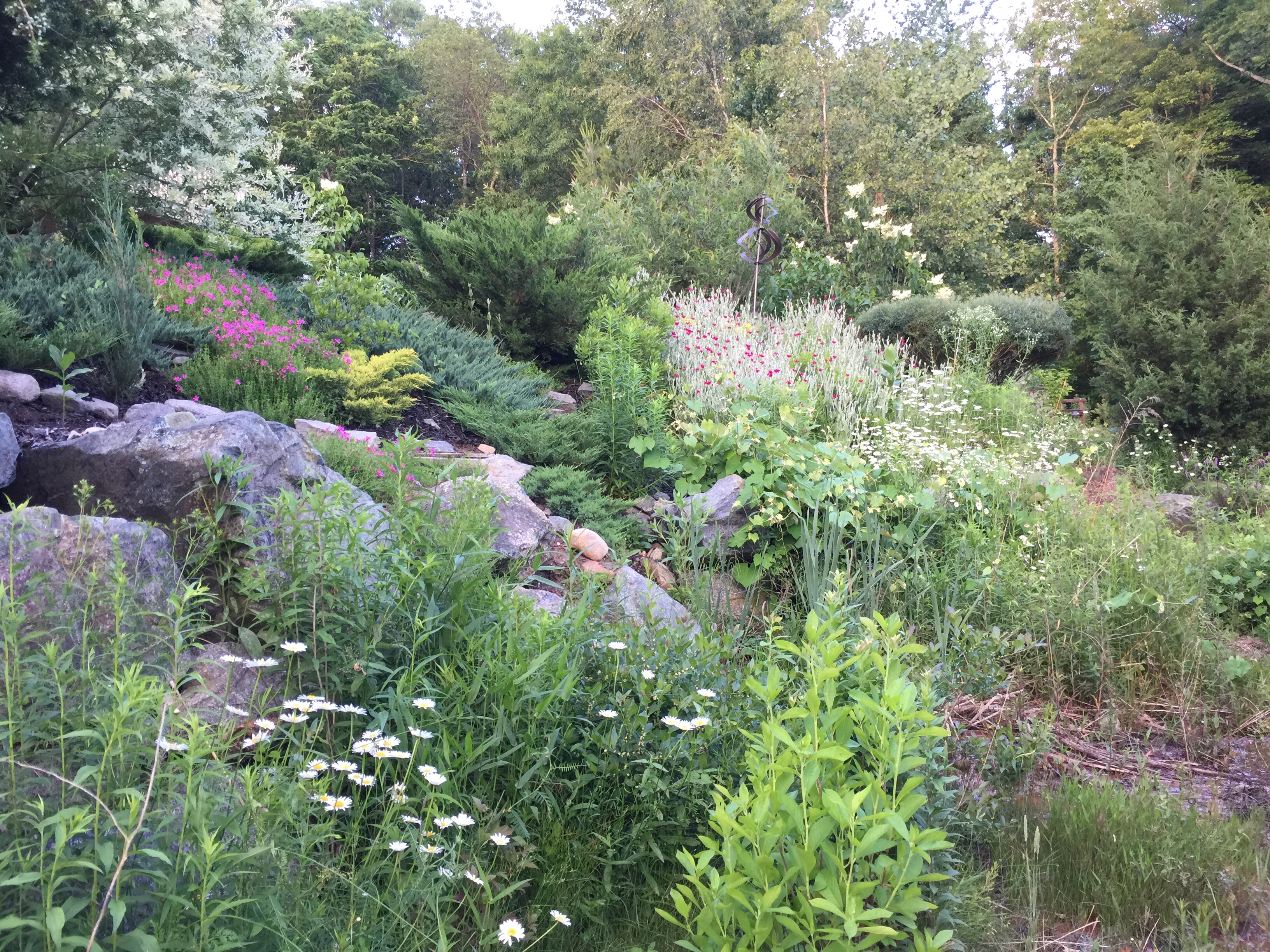
Looking up the slope is a mix of volunteers and things we planted for erosion control. In the latter category are junipers, phlox, bayberry, rose campion, willows, and in the former are native daisies, grapevines, asters and goldenrods. In the foreground are cattails and a winterberry holly (“Jim Dandy”); both like the damp area next to the pond.
Syringa Reticulata
The scent of the large, white, puffy blooms of tree lilacs adds to the charm of this walkway down to the pond. Sherwood Frost arborvitae is in the foreground with purple sage and pink rose campion.
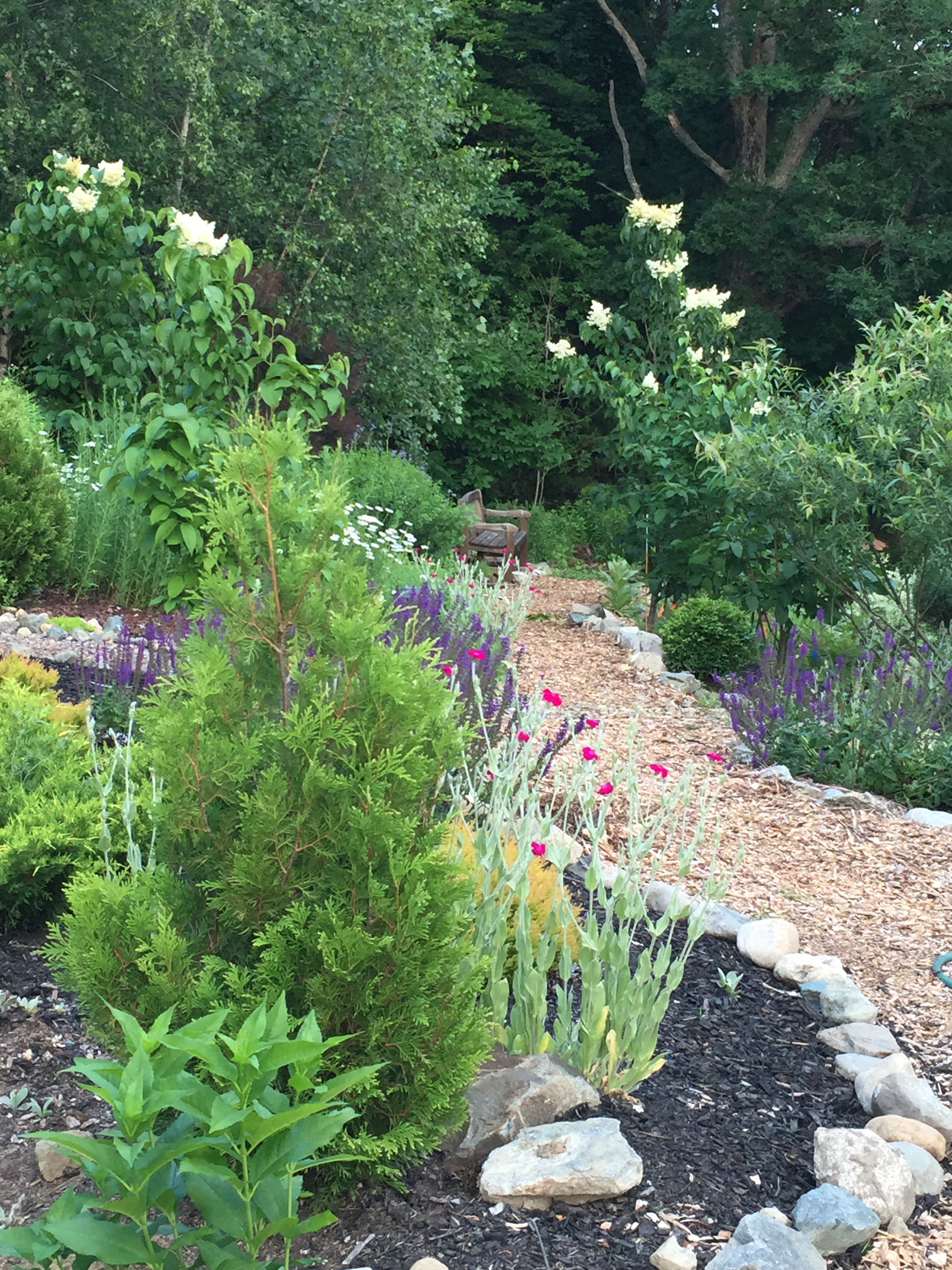
Bringing Out the Reds
A line of red pines had been suffering for a while. Now there’s no question; they are dead. While they await being felled, they happen to pick up on the color of a brilliant purple smokebush. To the left of the smokebush is a gray dogwood in flower; to its left is a Yellow Lantern magnolia. Bearberry, red knockout roses, purple blooms of catmint, yellow flowers of rue and white spikes of lambs’ ears all provide for plenty of contrast in the front yard.

Pruned Arctic Blue Willow
This part of the slope seemed to need more airflow. Clearing leaves and exposing the branch structure of this Salix purpurea ‘Nana’ seemed to help. On the left is Juniperus virginiana, on the right is dappled Willow (Salix integra ‘Hakuro Nishiki’) and in front of it is Juniperus horizontalis.
